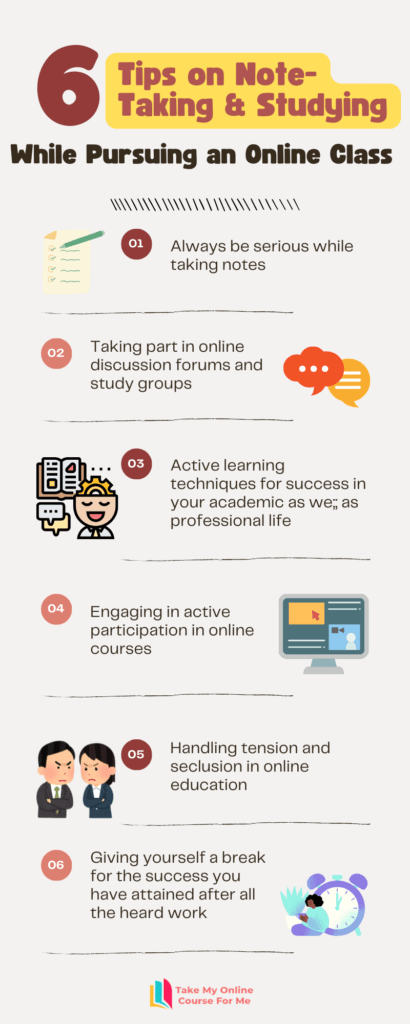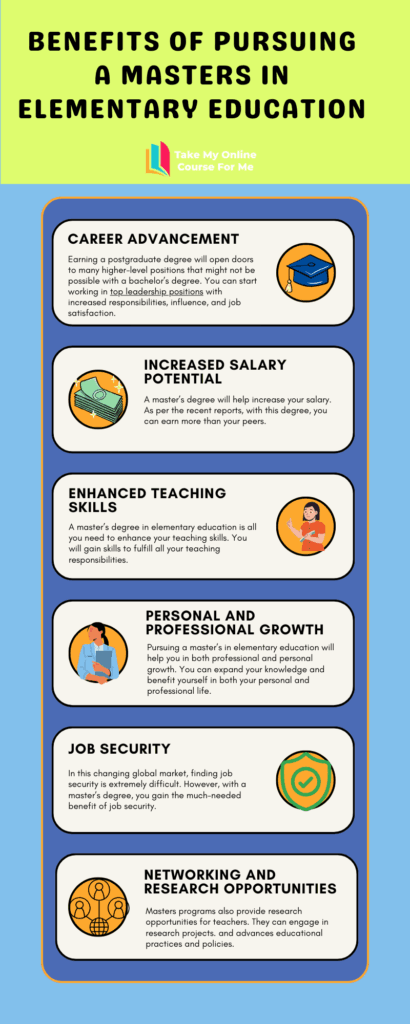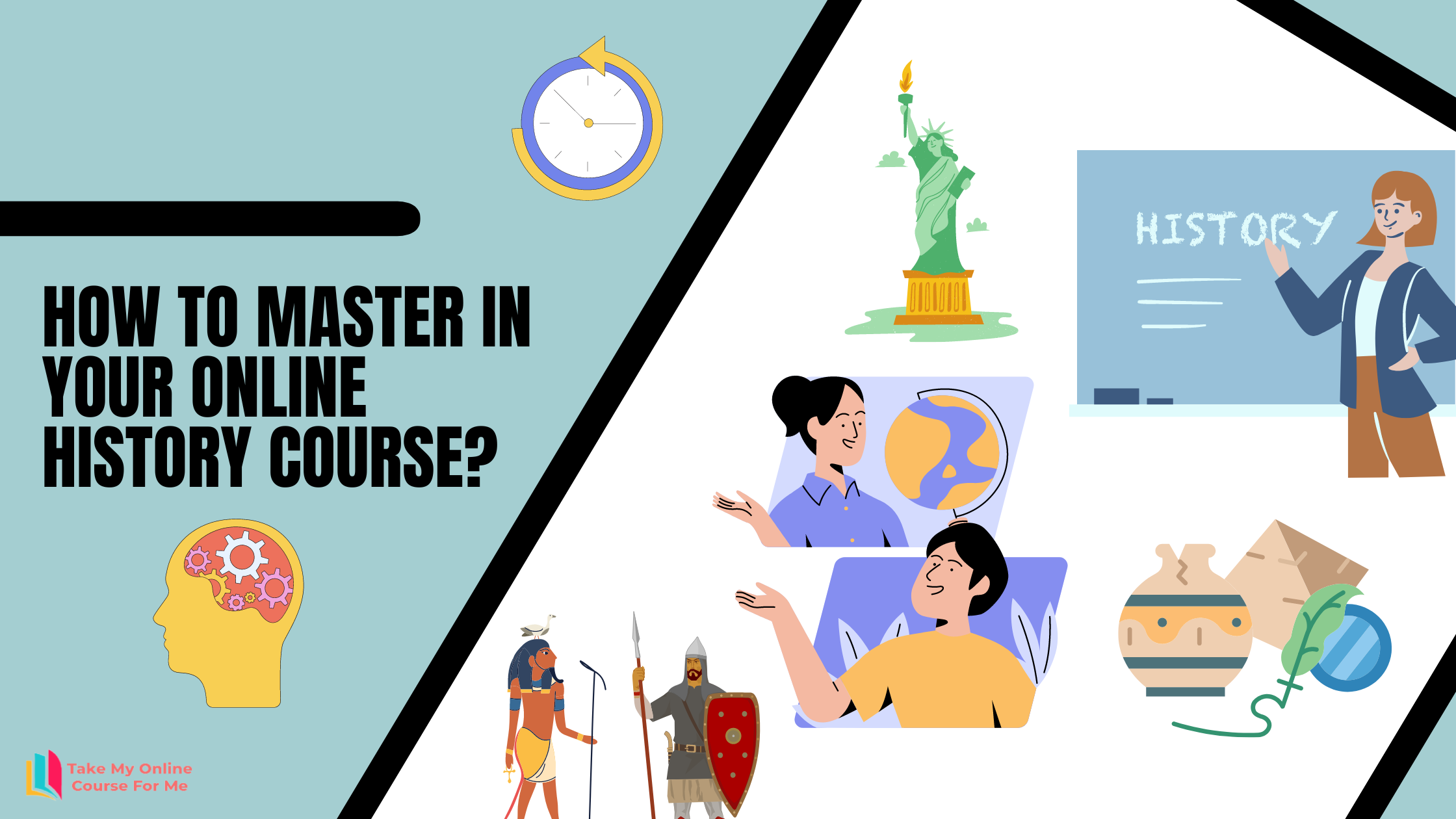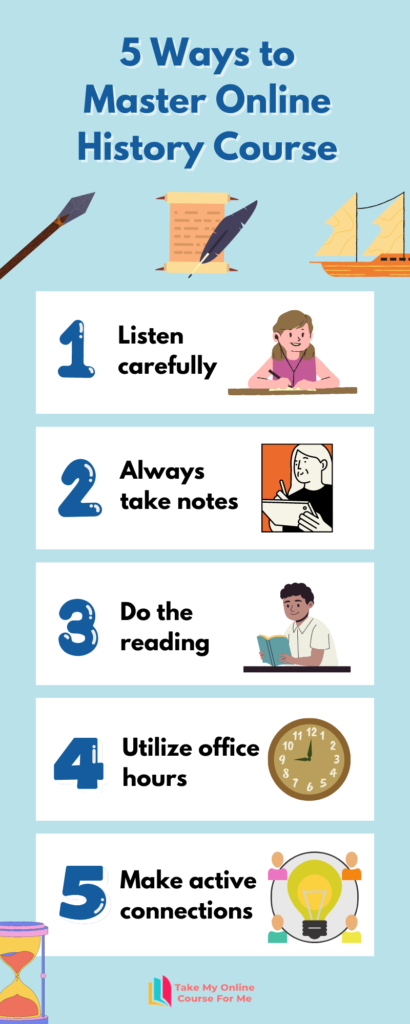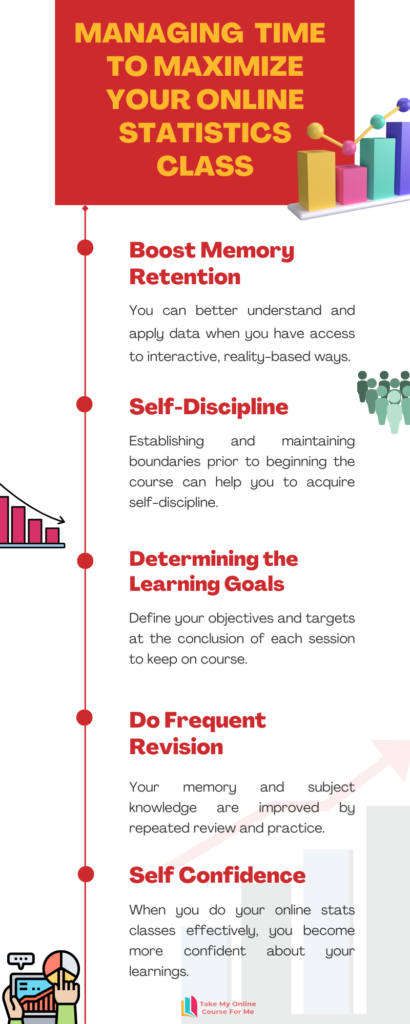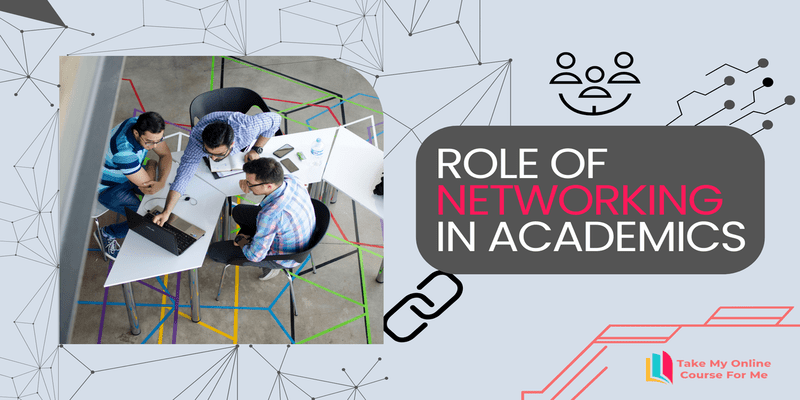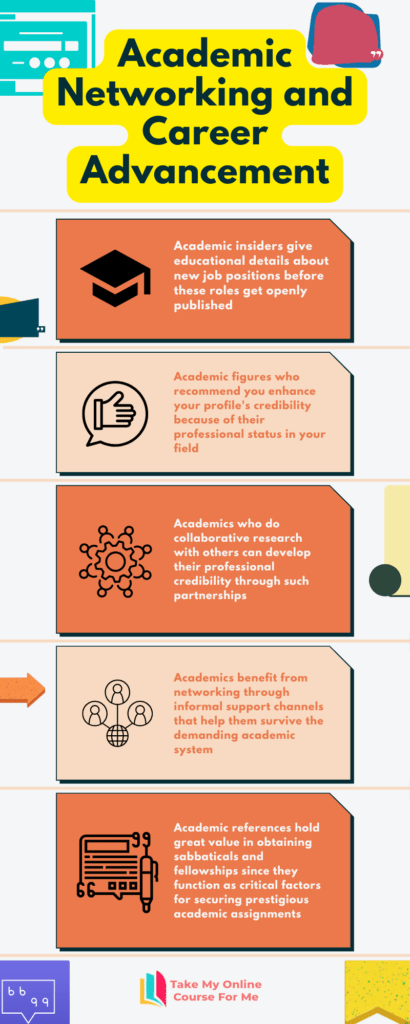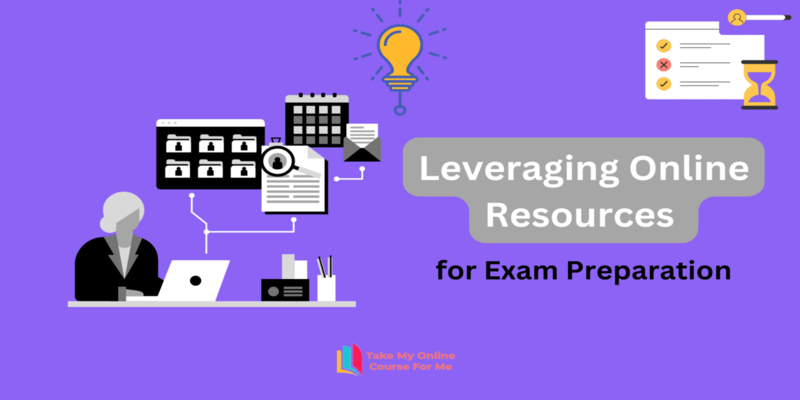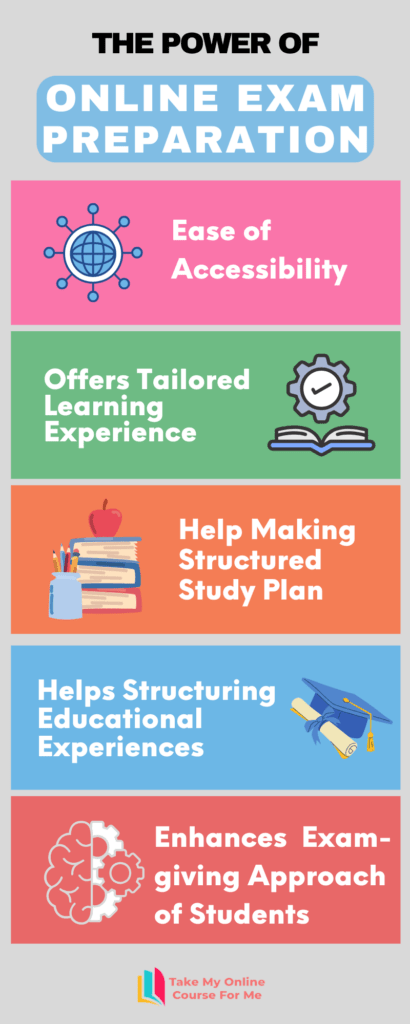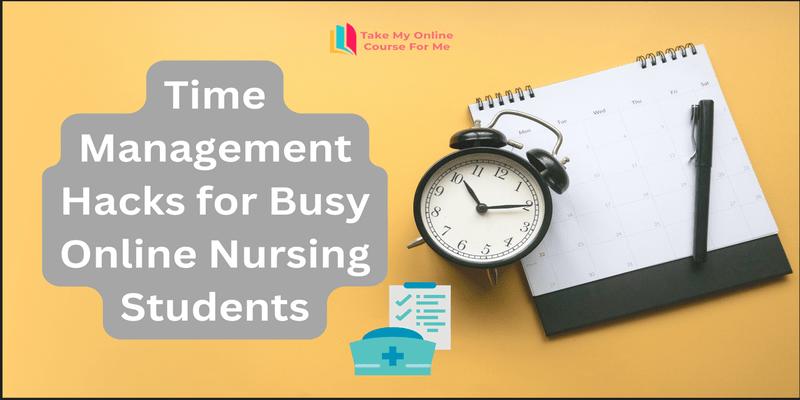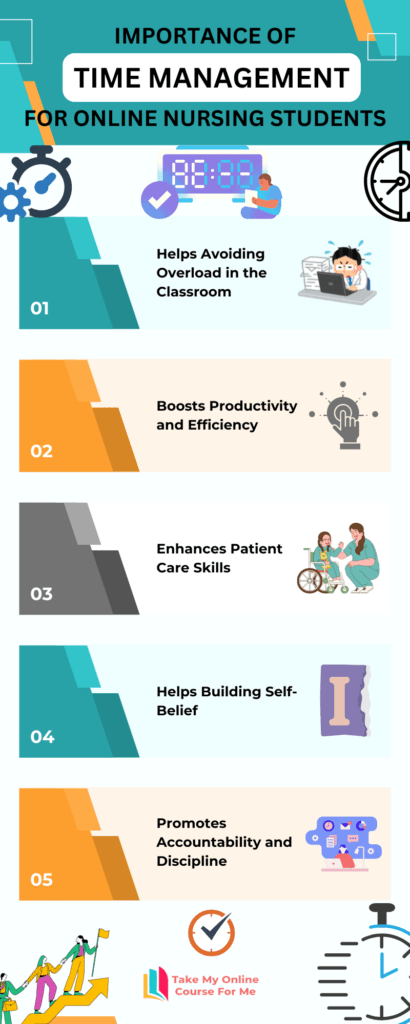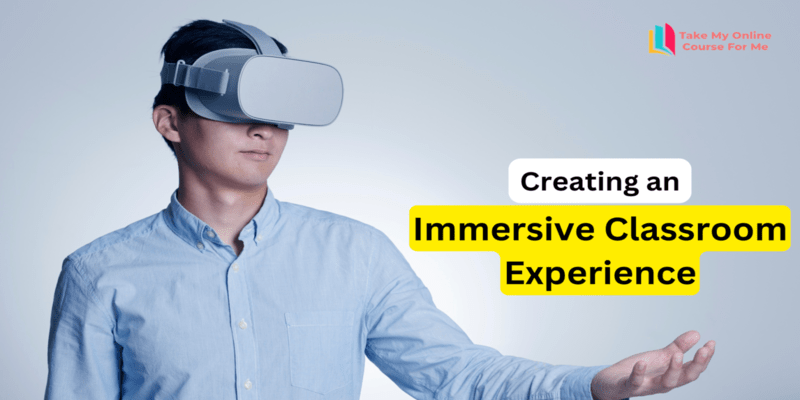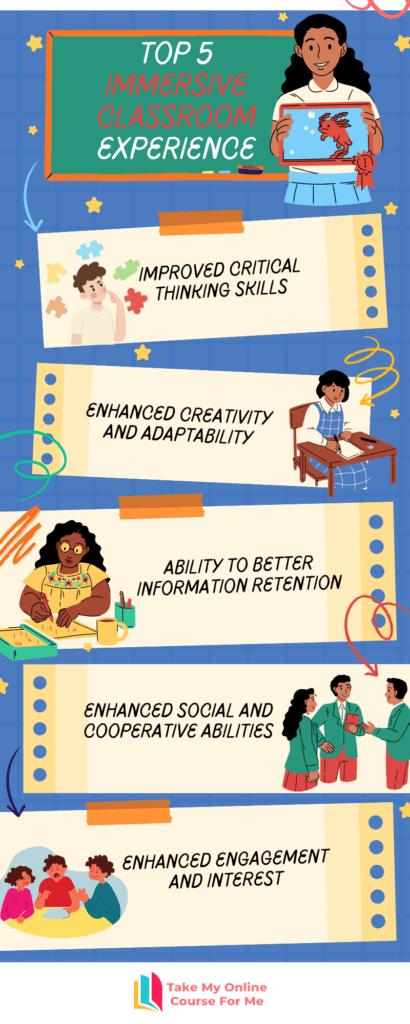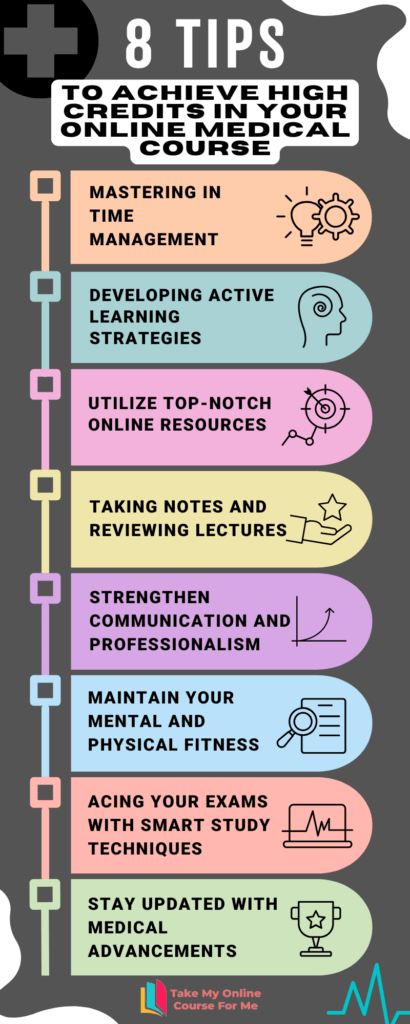Traditional Vs Online Chemistry Class – What’s Good and Bad About It?
The most important component of the online education framework, whether it is superior to traditional education or not, is up for debate. In essence, the online education model seeks to improve upon the drawbacks of the conventional educational system while simultaneously adding new advantages.
Students have many advantages when they opt for online courses compared to traditional courses. The chances of absorbing and understanding study materials are way higher when one is in an online class setting. On the other hand, students often have to work hard to memorize old-school ways of learning things. Students who enroll in online chemistry classes do very well considering how much assistance and participation these classes require of the students. This blog, will sort queries raised by students like Take my online class while they pursue online courses, review the benefits of online chemistry courses, and point out the major pros of traditional courses.
Read more: Cool Hacks for Obtaining High Course Credits in Your Online Physics Class
Benefits of Online Chemistry Classes and Courses
There is an array of benefits that students come across when they pursue online chemistry classes.
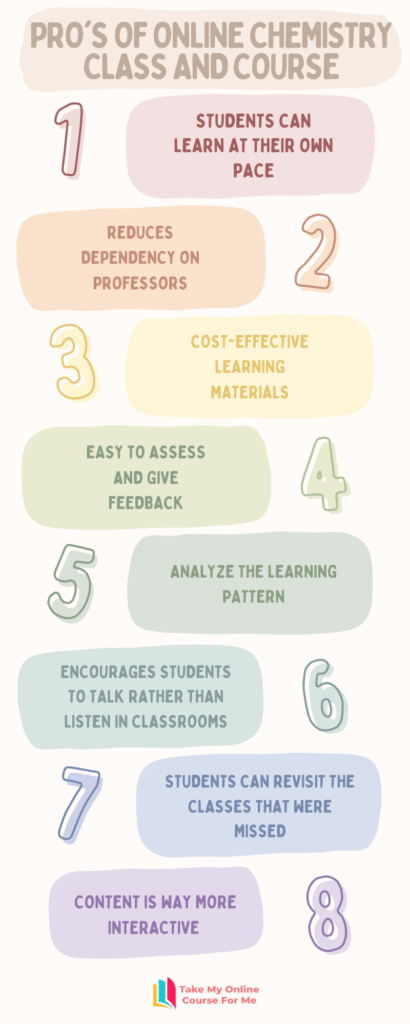
Let’s take a glance at the most general ones:
Students Can Learn at Their Own Pace
Online chemistry courses or class lessons are entirely in the grip of the students. This means that students can now learn at their own speed and ability. Every learner learns and retains information differently. In a classroom setting, the teacher clarifies ideas and addresses questions, but they can only do so much.
By providing more information and explanations via eBooks and other online resources, online education tackles this issue. Students can begin/end a chapter on their own; they are not required to wait for the teacher to do so.
They are able to take charge of their own learning through online learning. They can read the information again, reread chapters, listen to audiobooks, or use external links for assistance. This enables people to enroll in courses that best suit their convenience and learning style. Students who pursue their education online benefit from becoming active rather than passive learners and assume full accountability for their academic success.
Even if they want, can get help from outside to balance their online class or exams. For example, they just need to type Take my online biology class on Google and they will come across multiple companies, providing help at an affordable cost. This way, they can take care of other important things in their life as well.
Reduces dependency on professors
The reliance on professors for additional information or notes decreases when students have access to online learning opportunities. With the use of internet libraries, they can independently obtain more information. Students with simple internet connectivity have access to a wide range of online learning resources.
Because they would have access to both their own approved course material from the institute and outside resources, they would be better prepared for their tests. Thus, the need for notes and explanations from teachers is lessened with online learning.
Cost-effective learning materials
When comparing the cost component, online education is significantly more economical for students than conventional education. This is due to the distinction between the processes used to create printed textbooks and online course materials. A paperback book is more expensive since there are several steps involved in producing it. Trees are cut down for the purpose of making paper, printing, packaging, and shipping.
Each printed book costs more as a result of all these procedures. In contrast, eBooks are written using online software before being published and sold digitally. As a consequence, for any given academic year, eBooks cost much less than the total expenditure of actual textbooks. Additionally, whatever you need to know, is kept in one single place.
Easy to assess and give feedback
Contrary to what traditional education mandates, students are not required to purchase separate books for each topic. Online learning is therefore environmentally and visually appealing. Instructors typically devote a significant amount of time to grading students, checking homework, and other tasks. The standard educational approach involves far too much paperwork
This time will be cut down with the introduction of online course modules. Instead, instructors should devote more time to setting up an engaging learning atmosphere in the classroom through activities, discussions, etc. Online assignments are generally simple to evaluate. Students submit online assessments and assignments, and teachers have access to them at any time and from any location.
They are not required to sit down with a mountain of paper to review. They can watch online content while waiting for the bus, taking a break between lectures, etc. because mobile platforms allow for the viewing of online content.
Analyze the learning pattern
The conventional educational system lacks the tools to assess students’ levels of engagement in the debate between traditional and online education. It’s difficult to determine if the kids have finished reading a specific chapter.
While an online platform for education analytics provides a detailed report on each student’s performance. It allows you to gauge how engaged the entire class is. All the crucial factors like the number of studied chapters, students’ progression rate, and the total number of held exams along other factors can all be scrutinized by instructors for the purpose of determining which way the course is being delivered and how much and well it is consumed by students.
When there is a need of taking external help thinking for example, I want someone to take my online calculus class for me – students will be more confident in selecting the best-suited company to take care of their online class or even exams. This is because the online course provides them the opportunity to maximize the internet for better studies and make the most of it.
Encourages students to talk rather than listen in classrooms
The hands-on learning strategy has grown in favor in recent years because it can turn the conventional teaching paradigm on its head. This means that professors are now encouraging students to complete their “homework” in class while doing the reading and studying at home. Online reading and video-based learning assignments are given to students, and the same topics are covered in class.
This strategy aids in fostering an interactive learning environment where students learn by resolving issues in front of other students and teachers. This results in a better method of learning. By encouraging students to ask questions, and participate in individual or group activities, and other learning activities, teachers hope to increase the amount of knowledge that students have. As a result, the reverse learning model promotes cooperation and teamwork, creating an enjoyable learning environment.
Students can revisit the classes that were missed
Because they are ill or because they believe the lectures to be too tedious and monotonous to attend, students occasionally have a tendency to miss a few courses. In either scenario, the instructor is unable to deliver the identical lecture to a small group of pupils again. It would be unfair to the other pupils in the class to do so. However, with the aid of online courses, students can review the course material whenever it is convenient for them or when they feel attentive. Students would also have access to whatever additional material the teacher offered in class as online notes can be shared with classmates.
They are no longer concerned about skipping topics or chapters. Because students can catch up with the aid of online tutorials and other links even if they miss out on a few things. Some colleges now archive their lectures so that students can see them afterward. As a result, online education guarantees that students never miss a lesson.
Content is way more interactive
While encouraging classroom engagement, online learning also gives students the chance to interact with their course materials. Students can interact with their course material through online learning thanks to features like drag and drop and click and reveal.
Students may easily access the course materials on any platform and device of their choosing thanks to the responsive design of the course materials. For improved interaction, the text is additionally embedded with a variety of interactive components, including external links, videos, music, etc.
To make the course module more difficult for the students, educational publishers and institutions also integrate gamification and interactive quizzes and assessments. Students learn information more quickly when the course material is interactive.
Reasons Why Students Prefer Digital Learning Over Offline Way of Learning
There are multiple reasons for students to prefer accepting the online way of learning compared to the conventional way of studying. The same applies to online chemistry classes as well.
Take a quick look at the below-mentioned data to understand how preferences among students have changed and are changing rapidly:
- According to the latest study released by McGraw-Hill Education in partnership with Hanover Research 3000 students voiced their preference for digital learning in the college setting
- The same study indicated that 81% of students said digital learning technology has helped them boost their academic grades
- 71% of students engage more with digital course material
- 97% of students found adaptive learning technology helpful in keeping things in mind
- As per 84% of students, digital ways of doing online chemistry classes have helped them enhance their knowledge like never before
- 45% of students said that they want to continue doing online chemistry courses through their personal devices
The data shows a lot of makeshift among students and this can really be great when it is helping them to learn and do things better.
Final Words
It is evident that technology can significantly affect education when used effectively. Therefore, rather than replacing one another, traditional education and online education can be blended to create a more effective, efficient, and dynamic learning experience.
Students who take online chemistry class or course lessons in school, high school, or college are projected to perform well academically since they have far better learning opportunities than they would in offline or traditional programs. A student’s total growth depends on interpersonal skills, which are developed through face-to-face interaction, group learning, and other traditional methods of instruction.
Read more: Best Tips to Get Success in Your Online C Class
Frequently Asked Questions
| Question 1: How Will I Be Benefitted by Taking Online Chemistry Class Help? Answer: Companies that provide online class help will assist you in getting the much-needed time for your family, friends or pursue your passion. Their professionals take your online chemistry class in such a way that you can be at peace and know you will get the important study materials or notes that the professor shares in the class. This can be highly useful in upcoming classes or exams. |
| Question 2: How much do I need to Pay to Get the Best Quality Assistance in My Online Chemistry Class? Answer: You can get top-notch service without shelling out a big share of your reserve. Genuine class help companies understand the majority of students’ monetary condition and thus asks for the price that you can bear easily. |


